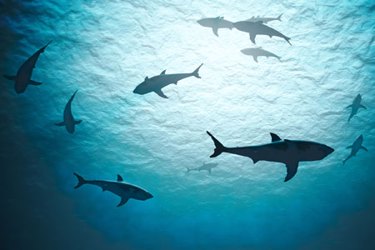How New Shark Insights Might Spur Wastewater Innovations

Contrary to how sharks are portrayed in movies and television shows, scientists didn’t know much about what they eat or how they digest their food. Until now, that is.
Researchers recently produced a series of high-resolution, 3D scans of intestines from nearly three dozen shark species that will advance the understanding of how sharks eat and digest their food. Primarily using a computerized tomography (CT) scanner at the University of Washington’s Friday Harbor Laboratories, the team created 3D images of shark intestines from specimens preserved at a museum.
While the findings are important to those who study marine life, the results may also drive new innovations in wastewater treatment. That’s because the authors of the study plan to use a 3D printer to create models of several different shark intestines to test how materials move through the structures in real time. They hope to then collaborate with engineers to use shark intestines as inspiration for industrial applications such as wastewater treatment or filtering microplastics out of the water column.
For more than a century, researchers have relied on flat sketches of sharks' digestive systems to discern how they function.
The machine researchers used to gain new insight works like a standard CT scanner used in hospitals: A series of X-ray images is taken from different angles, then combined using computer processing to create three-dimensional images. This allowed researchers to see the complexities of a shark intestine without having to dissect or disturb it.
From their scans, the researchers discovered several new aspects about how shark intestines function. It appears these spiral-shaped organs slow the movement of food and direct it downward through the gut, relying on gravity in addition to peristalsis, the rhythmic contraction of the gut's smooth muscle. Its function resembles the one-way valve designed by Nikola Tesla more than a century ago that allows fluid to flow in one direction, without backflow or assistance from any moving parts.
The research team from California State University, Dominguez Hills, the University of Washington, and the University of California, Irvine, published its findings July 21 in the journal Proceedings of the Royal Society B.
